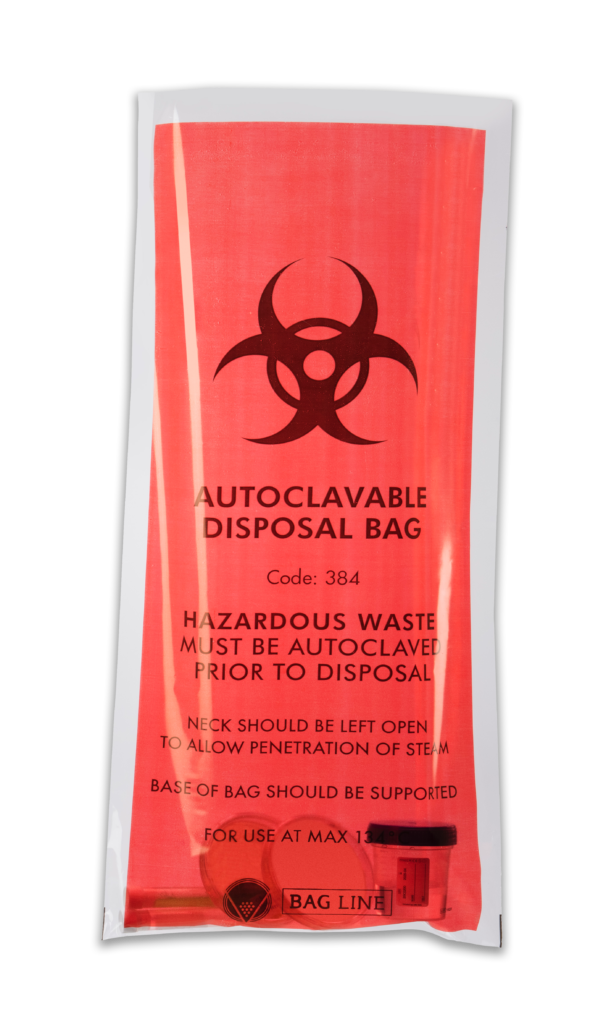for sterilizing infected materials (*) WHO FUNDAMENTAL OF HEALTH-CARE WASTE MANAGEMENT. https://www.who.int/water_sanitation_health/medicalwaste/en/guidancemanual1.pdf IDENTIFICATION CODE Code STERIBAG – AUTOCLAVABLE DISPOSAL BAG 384 FAQ – QUESTIONS AND ANSWERS → WHAT DOES IT MEAN “AUTOCLAVABLE BAGS”? These bags are used for the disposal of biohazard waste or for autoclaving items (animal cages, Petri plates, membrane filters, culture plates, pipettes, etc.) in a safe and efficient way. → WHAT ARE BIOHAZARD BAGS MADE OF? They are made of a resistant plastic (PP) that can resist at high temperatures and pressures of autoclave. → WHICH ITEMS CANNOT BE AUTOCLAVED? Do not autoclave contaminated items containing solvents, volatile or corrosive chemicals, radioactive materials or carcinogens, mutagens or teratogens. → WHY 121°C FOR AUTOCLAVING? High pressure is needed to reach high temperatures and kill quickly micro-organisms. The most common steam sterilizing temperatures are: 121°C (250°F) and 132°C (270°F). These temperatures must be maintained for a minimum time in order to kill micro-organisms. → HOW DOES MOIST HEAT KILL BACTERIA? Moist heat kills micro-organisms by coagulating their proteins. Moist heat is generally much more effective than dry heat. → DOES AUTOCLAVING KILL ANYTHING? Proper autoclave treatments make inactive all resistant bacterial spores, fungi, bacteria and virus but they are not expected to eliminate all prions which vary in their resistance. An indicator tape is often present on the packages before autoclaving. → HOW DO YOU DISPOSE AUTOCLAVED WASTE? Remove autoclaved waste immediately after the cycle is completed. Never leave items in an autoclave overnight. Place the autoclaved red bags in the designated biohazardous waste collecting area. → HOW DO YOU USE A BIOHAZARD BAG? Seal properly the bag. Wear always gloves, apron, face mask or eye protection while handling these materials.
Need more informations?

bags in polypropylene (PP) – size 300×660 mm – 20x50x box – 1.000 in total


ORUM INTERNATIONAL
STERIBAG – AUTOCLAVABLE DISPOSAL BAG
BAG LINE
